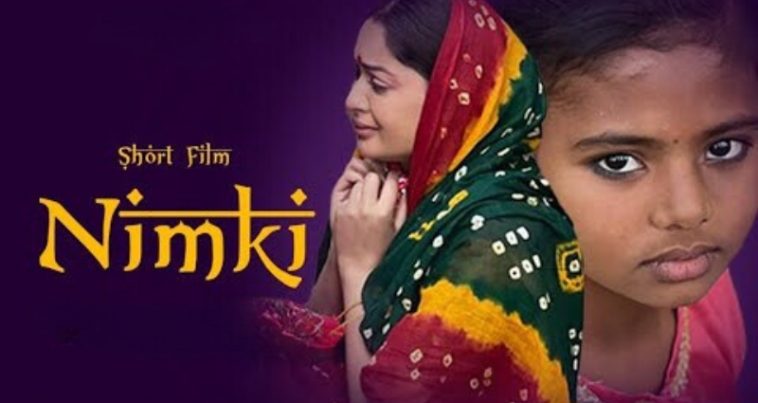Director: Faseeh Bari Khan
Writer: Faseeh Bari Khan
Duration: 22 mins
Streaming on: Youtube
As I watched ‘Nimki’, a short film made by the television scriptwriter Faseeh Bari Khan (Ghisi Piti Muhabbat, Quddusi Sahib Ki Bewah), a scene from Afwaah (Netflix) came to mind. A stabbed man gatecrashes a literary festival and drops in the middle of classical performance taking place on stage. The audience – the musical elite – takes this act as part of the performance and starts applauding as the man (Nawazuddin Siddiqui) lies bleeding.
The Plot
‘Nimki’ begins with a writer-poet Jaideep or Jaadu bhaiya (Zohaib Haider) reciting verses about free love to an artistically sophisticated group of friends. This could very well be the most liberal gathering on that day in Lahore. A queer man performs on thumri. It is all boozy and breezy at Jaideep’s rooftop party until his sister Nimki (Adila Saleem Khan) comes knocking with a friend in tow. What follows, reveals a brother’s journey from living an afflicted life to escaping into good-looking representations of it.
Nimki, the film, is easily an indictment of the tone-deaf liberals for whom lyrical laments of loss and suffering are absorbed as merely pleasant aesthetic background. Jaideep and Nimki have just one encounter but that is enough to tell us the decades passed between them, with or without each other. What elevates the central conflict of the film from being a showdown of conservative vs secular ways of life is the social context under which these ways are set about. Nimki and Jaideep are minority Hindus in Pakistan. In his head, Jaideep is the protagonist of his own misfit, dreamer movie. He doesn’t simply disdain the overtly religious ways of his sister, he wants to forget them. His past is not simply a place but a time to leave behind.
The Layered Writing
Nimki, the film, despite some sound and editing issues, lays bare the two cinematic languages of a culture. Nimki wears her religion on the sleeve. She isn’t concerned about being looked at as a story, a human’s right issue, a topic for a book. She has made her nest and wants everyone to live in it. But Jaideep has always wanted to leave the nest and not so much for the allure of what lies beyond his endangered, persecuted existence but to escape into bereavements of his own making.
When a Muslim writer Maryam Dar (Mehreen Shah) tries to impose her gaze onto him, Jaideep’s predicament is unmasked. The numerous busts, naked sculptures, the portraits of languorous intimacy, and the artsy cocoons of literature in Jaideep’s house suddenly make sense. That as hard as he tries to transcend his class and faith, his identity will be confined to his socio-religious status. The lens of modern society would always see him as a victim, or an empowered victim. He will never be a subtext, always a heading.
So, his house decor has to stink of radical progressivism for its inhabitants to remember and for its visitors to believe in the secularism being chased. Jaideep is a fugitive breaking free of shameful origins by acquiring the language of the elite. He acts a little vain and condescending towards Nimki. One can think that Jaideep is an entitled artist, who thinks of himself as more exalted than anyone who doesn’t proclaim liberal-left virtues. But it feels more like an act, spurred on by a haunting sense of fraudulence, that something or someone, would betray his avatar.
Is There Hope?
Then there is the last line of Jaideep’s verse in the opening scene. It begs to remember the hearts broken when the battles are won. He may have successfully run away from the smallness and the small-mindedness of his community, but breaking is the part of breaking free. Not just Nimki, but her Jaadu bhaiya too can’t fully escape his roots. The house where he practices a sense of separation from his past is also the biggest witness to his umbilical cord. The gaudy colors of Nimki’s saree echo similar colors on Jaideep’s house walls. Their unspoken love remains in the shades of saffron.



Comments
0 comments